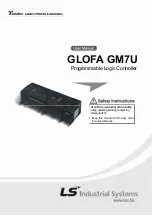
128
Using the serial and racadm Commands
www
.dell.com | support.dell.com
To connect to the managed system text console, type
connect com2
from the DRAC 4
command prompt (displayed through Minicom or HyperTerminal).
NOTE:
When accessing a DOS console through
connect com2
, characters in the output may be dropped
during the output of large amounts of data (for example, the dump of large files greater than 30 lines).
This can cause incorrect displays in
connect com2
over telnet sessions. Red Hat
®
Enterprise Linux and
the Microsoft
®
Windows
®
Special Administration Console (SAC) work correctly.
connect com2
also supports the
-h
option. This option displays the history of the last characters
written to the text console. The default (and maximum) size of the history buffer is 8192
characters. You can set this number to a smaller value using the command:
racadm config -g cfgSerial -o cfgSerialHistorySize
<number>
The
connect -h com2
command displays the contents of the serial history buffer before
waiting for input from the keyboard or new characters from the serial port.
NOTE:
The terminal emulation type (ANSI or VT100) of the client terminal must match the type on the
server serial port output when using the
-
h option; otherwise, the output may be garbled. In addition, the
number of rows of the client terminal must be set to 25.
Viewing a List of Serial/Telnet Commands
Type
help
to display the entire serial/telnet command list. Commands that are not supported
on the system or interface that you are using are labeled as such. For example, if a specific
command is not supported on the system, the following text is displayed next to the command:
<NOT SUPPORTED>
If you type a command that is not supported on the system you are using, an error similar to the
following is displayed.
setsvctag: Firmware: UNSUPPORTED COMMAND
Table 8-1 lists the
serial/telnet
commands. These commands are also supported as
racadm
commands. The descriptions and "man page" information including required syntax for the
serial/telnet
commands are identical for the
racadm
command. You do not need to type
racadm
before typing a
serial/telnet
command because the
serial/telnet
commands are not
racadm
commands. They are at the same level. For detailed information about the required
syntax for each
racadm
command see "racadm Subcommand Man Pages."
Table 8-1. Serial/Telnet Commands
Command
Description
help
Lists DRAC 4 commands.
help <
subcommand
>
Lists the usage statement for the specified subcommand.
logout
Logs out of a DRAC 4 session and then prints a new login prompt.
quit
Logs out of a DRAC 4 session and then prints a new login prompt.
exit
Logs out of a DRAC 4 session and then prints a new login prompt.
Summary of Contents for DRAC 4
Page 28: ...28 DRAC 4 Overview w w w d e l l c o m s u p p o r t d e l l c o m ...
Page 84: ...84 Managing and Recovering a Remote System w w w d e l l c o m s u p p o r t d e l l c o m ...
Page 148: ...148 Troubleshooting w w w d e l l c o m s u p p o r t d e l l c o m ...
Page 182: ...182 racadm Subcommand Man Pages w w w d e l l c o m s u p p o r t d e l l c o m ...
















































